
Mammograms and Your Risk of Cancer:
Women all around America and other industrialized nations are told that regular mammograms are the best approach for early breast cancer detection (1, 2). A mammogram is an x-ray of the breast that looks to find tumorous growths that are otherwise undetectable in a physical exam. New research has revealed how dangerous mammograms are.
X-rays use ionizing radiation to create the photographic image (3). Despite enormous funding and research, mammography has a very strong opposition in many quadrants of the medical and natural health communities (4).
This opposition is due to the dangers involved with the amount of harmful radiation, the inaccuracy rates and the economic costs. Yearly mammograms had been recommended for women over the age of 50. In 2001, US health officials began recommending women over 40 get regular mammograms. The Lancet wrote in July 1995 that “the benefit (of mammograms) is marginal, the harm caused is substantial, and the costs incurred are enormous…” (5).
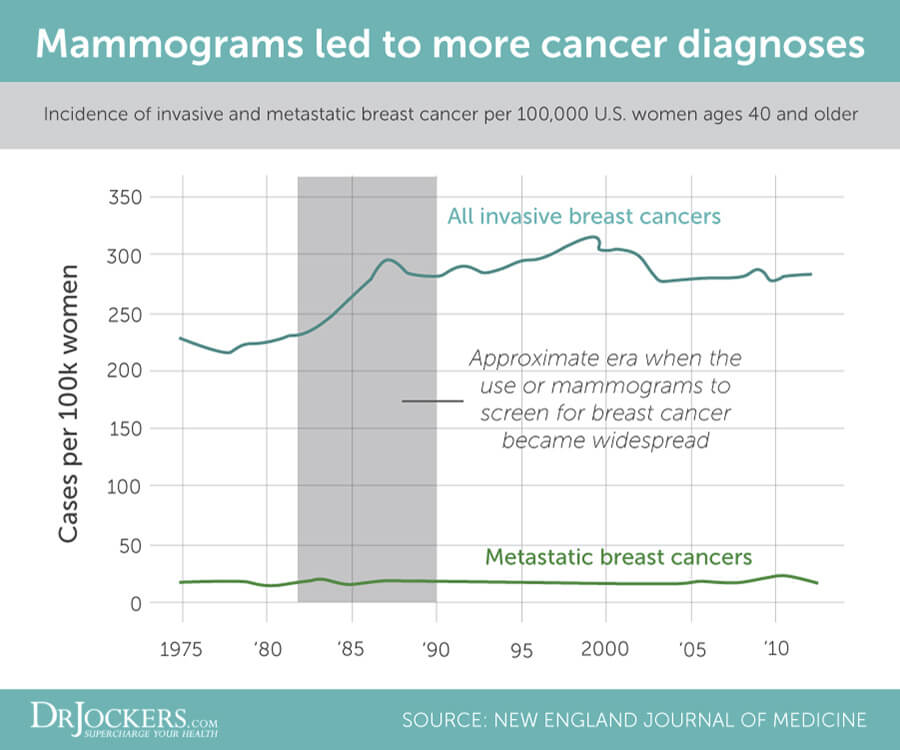
Mammograms and False Positive Diagnosis:
Many doctors have trouble trusting mammograms due to their enormous rate of false positive diagnosis. In one large study looking at 60,000 women, the researchers found that 70% of the detected tumors were not tumors at all (6).
These false positive results create a great amount of emotional stress on patients and family members involved. Even worse, these results lead to many unnecessary and invasive biopsies. Research has shown that 70-80% of all positive mammograms do not show the presence of cancer upon further biopsy testing.
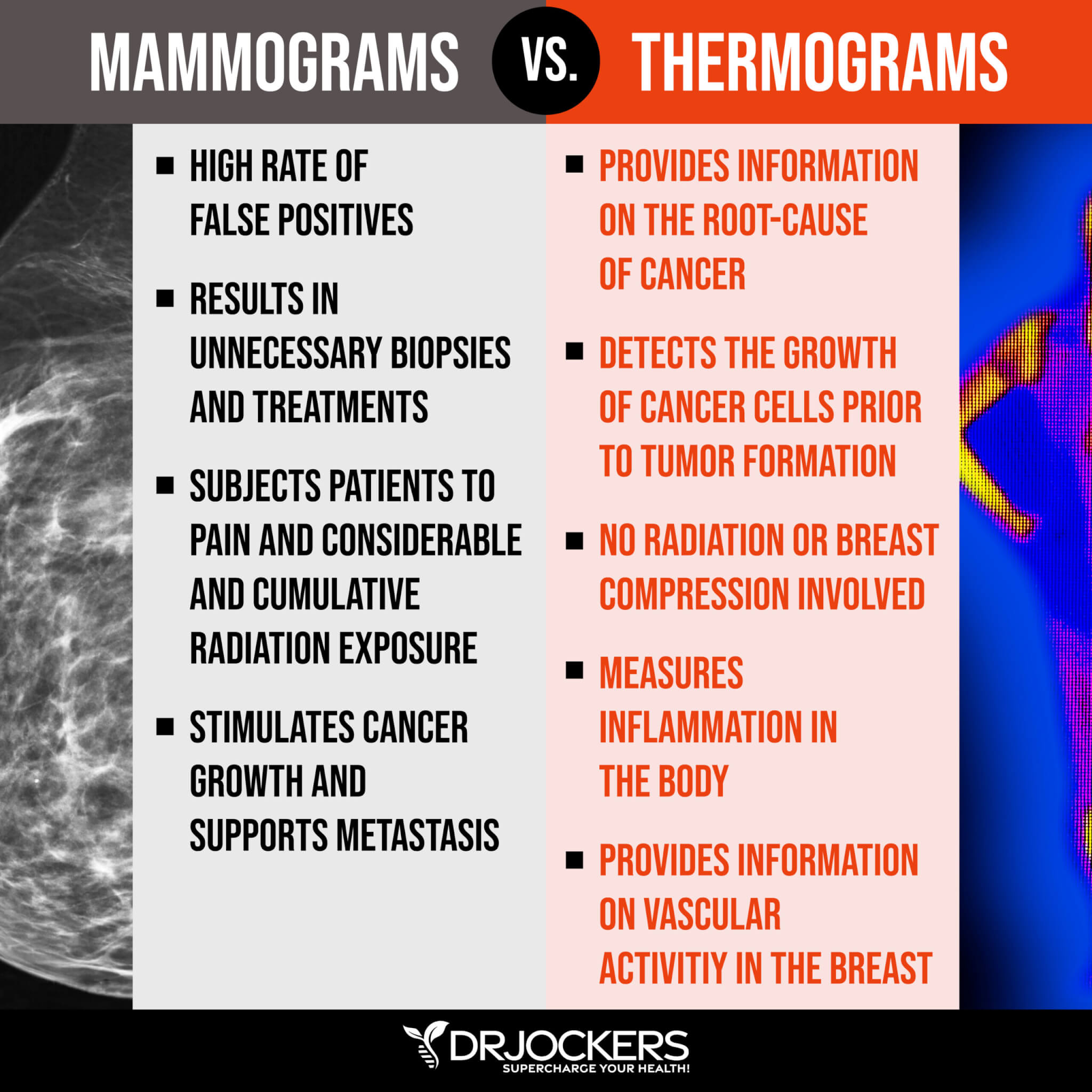
The Unnecessary Stress of False Positives:
False positives and unnecessary biopsies can dramatically alter an individual’s health. The emotional stress of believing you have cancer when you do not is enough to trigger the onset or the acceleration of disease in the body.
Many women have undergone unnecessary chemotherapy, radiation and mastectomies after receiving false positive results on a mammogram. This creates an enormous overall economic, emotional, and physical stress on the individual due to the limitations of this sort of testing (7).
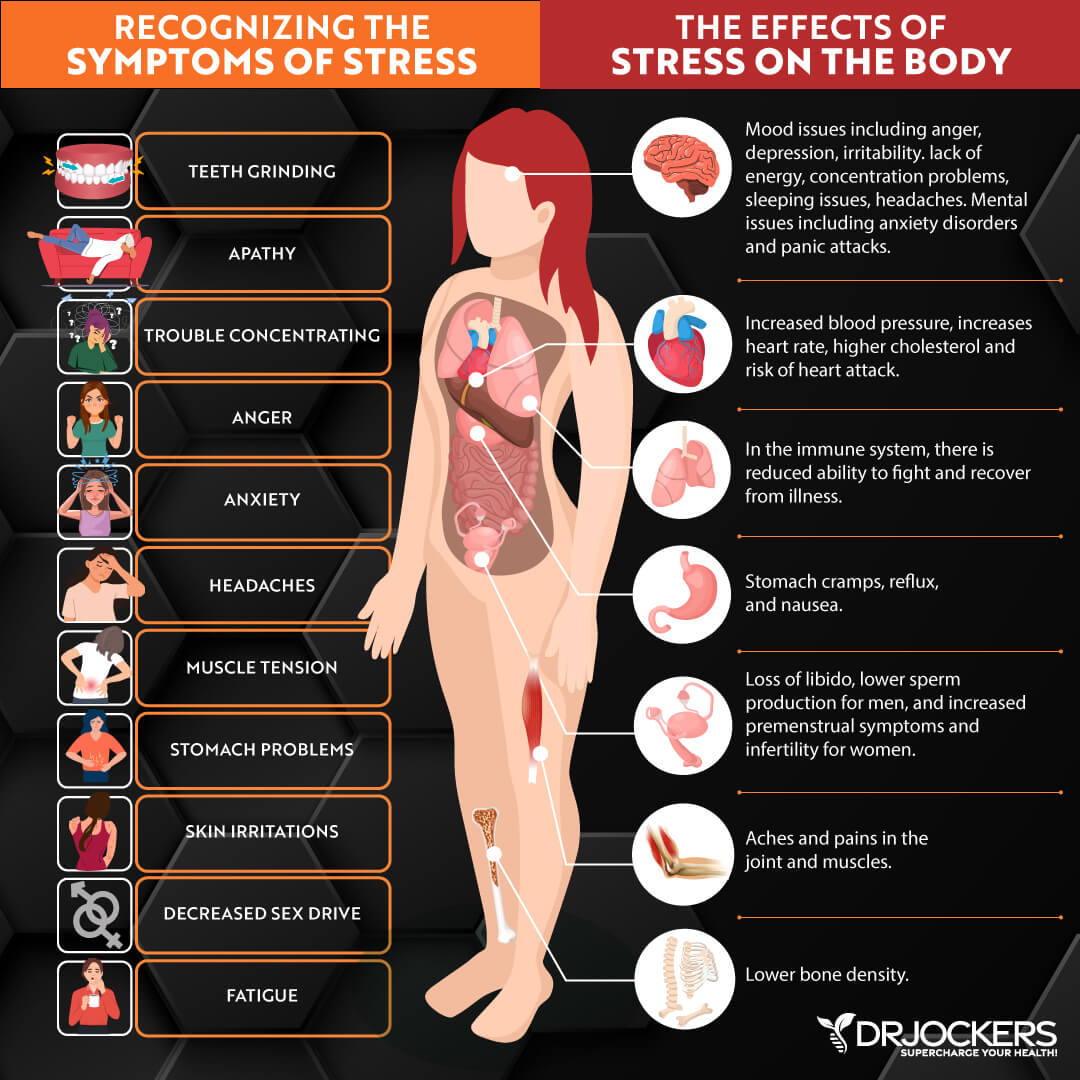
Mammograms Bring Massive Radiation:
Routine mammography exposes the individual to an exceptionally high amount of ionizing radiation. Ionizing radiation is something we are all exposed to in nature and the body can handle a certain amount each year without it becoming risky. One series of mammograms (2 xrays on each breast) is equivalent to the radiation dose of 8 normal chest or spinal x-rays (8).
Due to this enormous blast of radiation many experts warn that mammography actually increases the risk of breast cancer. Dr. Russell Blaylock, MD, estimated that annual mammography increases the risk of breast cancer by 2% each year (9).
The National Cancer Institute has stated that mammography is especially dangerous for younger women. In fact, they have stated that it could cause 75 cases of breast cancer for every 15 it identifies. Other studies have shown up to a 52% increase in breast cancer mortality in young women given annual testing.
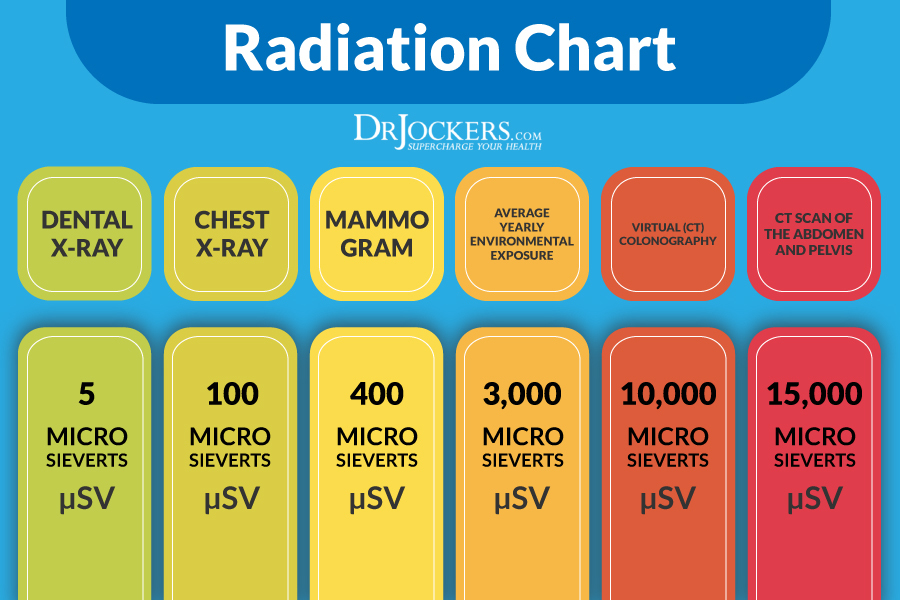
Mammograms Induce Cancer Growth:
The incidence of certain forms of breast cancer such as ductal carcinoma in situ (DCIS) has increased by 328% since mammography was introduced (10). Cancer research has also has found a gene called oncogene AC that is very sensitive to radiation (10).
Women who have this gene are at extraordinarily high risk when exposed to mammography. Researchers estimate that 10,000 of these gene carriers will die of breast cancer each year due to mammography.
Mammography also requires the patient’s breasts to be compressed. This compression is known to cause the release of cancerous cells into circulation which greatly increases the risk of malignant spread (11).
Dr. Charles Simone, a former clinical associate in immunology and pharmacology at the NCI has been a strong advocate against mammography. He says, “Mammograms increase the risk for developing breast cancer and raise the risk of spreading or metastasizing an existing growth” (12).

Thermography is a Much Better Evaluation:
I strongly believe that an ounce of prevention is worth a pound of cure. We should be striving to live an anti-cancer lifestyle every day. Somehow our society has missed this. We are told it is okay to live a destructive lifestyle and then screen ourselves every year until we find the inevitable. When you get diagnosed…we treat you like the victim rather than showing you how you actually caused the problem with years of abuse.
I choose to live the anti-cancer lifestyle every day and do not waste my time with “testing for disease.” However, for those of you who know you spent years abusing your system and would like a safe test to evaluate for cancer…I recommend thermography. Thermography is not FDA approved for cancer diagnosis and shouldn’t be used specifically for that, but it is a non-invasive test that can find areas of increased metabolic activity that could be indicative of early cancer growth.
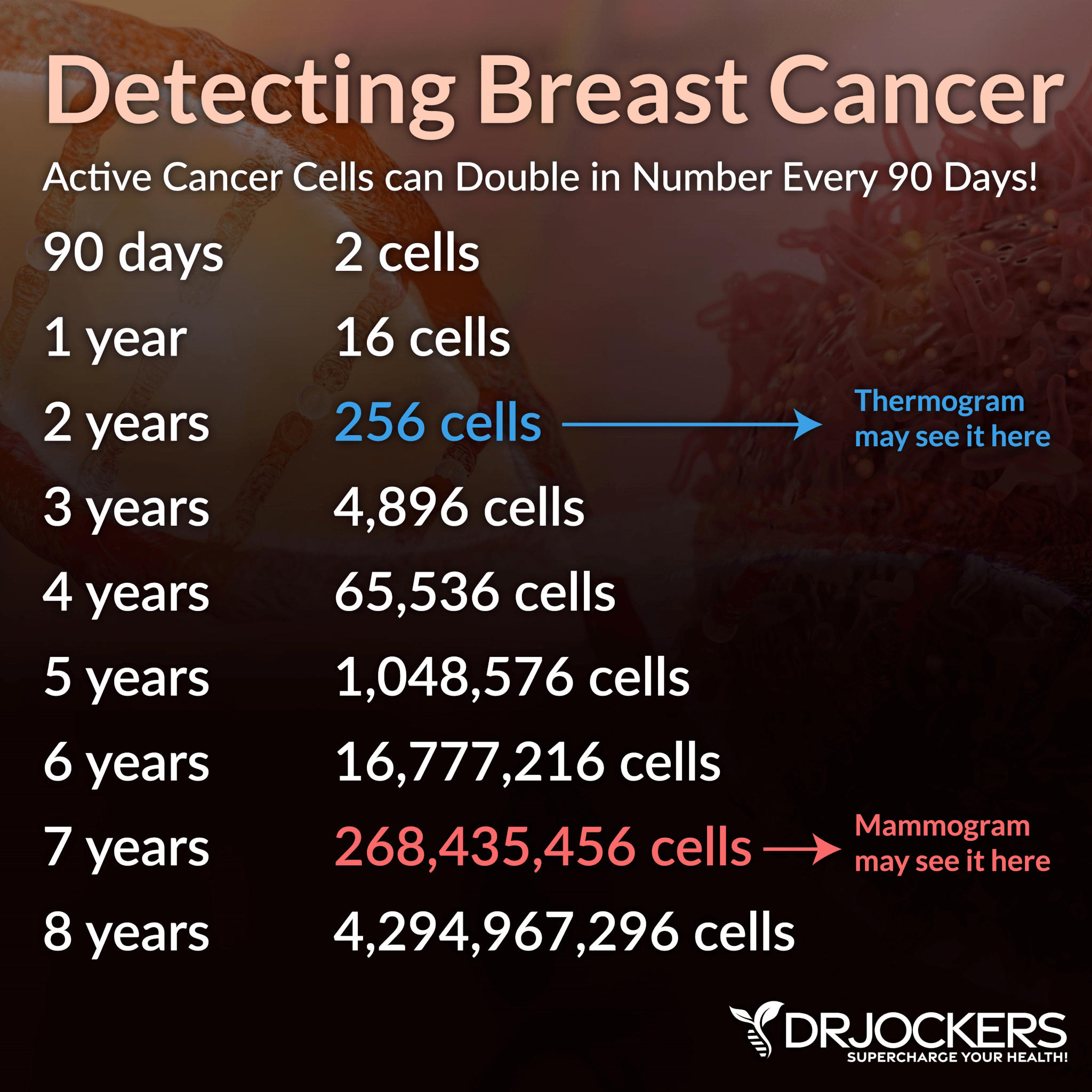
Inflammation Crushing Ebundle
The Inflammation Crushing Ebundle is designed to help you improve your brain, liver, immune system and discover the healing strategies, foods and recipes to burn fat, reduce inflammation and thrive in life!
As a doctor of natural medicine, I have spent the past 20 years studying the best healing strategies and worked with hundreds of coaching clients, helping them overcome chronic health conditions and optimize their overall health.
In our Inflammation Crushing Ebundle, I have put together my very best strategies to reduce inflammation and optimize your healing potential. Take a look at what you will get inside these valuable guides below!




I would like to address the claims in this article regarding high dose levels of radiation in mammography. Being an x-ray technologist myself I can tell you that Dr. Jockers is severely mistaken in his calculation of the radiation dose in mammography. 1 routine mammogram gives a dose of 42 mrem, a chest x-ray = 10 mrem, and a lumbar spine x-ray = 600 mrem. Living in the Chicagoland area, we are subjected to an annual dose of 326 mrem from only cosmic and terrestrial radiation. See for yourself. https://www.ans.org/pi/resources/dosechart/
Lynn, thank you for your response. I agree the dosages Dr. Jockers listed is outrageously high for a mammogram. Where did he get his information?
Thomas, in checking online, I found that RadiologyInfo.org and Cancer.org cite the same amounts that Dr. Jockers does. Perhaps that’s where he got his info. The link that Lynn provided above (American Nuclear Society, ANS.org) likewise cites the same amounts when converted to sieverts (milli or micro). They are correct. And I agree that the amount of radiation in the various scans is outrageously high in reality.
Thank you Lynn,
As a Mammographer, I read this article and when I read the info on dose I just SMH. I will say many women who are worried about the dose from a mammo are wrinkled from repeated sun exposure. They receive more exposure from a day on the beach. It’s all relative.
(One can feel the voracious appetites for profiteering on 51% of the species heating up in this debate; there are billions of dollars at stake.) Radiologists: let’s say I receive 2.4 mSv all year from (ever-increasing) “background” radiation. Let’s say it’s spread over 24 hours x 365.25 days and over my entire body relatively evenly. Now, let’s say I go have double or quadruple that dose of radiation to my pelvis or breast, where my fat-and-hormone-rich prostate or breasts are (or to my ovaries, colon, or other organs, in say, an abdominal/pelvic CT), but I receive THIS dose all concentrated in 1/4 hour and to this one area. And let’s say I repeat this every year or two. Now, what say you? And, about the breast “mashing” part? Isn’t the reason some oncological surgeons say they won’t operate is that they are concerned about spreading the cancer? So, does the (pretty intense) mashing argument merit any consideration?
I’m kind of with you on this, what the actual dose is I don’t know, i just know it is as well as not instead of and as you say highly concentrated.
I refused mammograms because of similar articles. The last mammo was in 2016. Now I have invasive cancer which would have been prevented, if I had yearly mammograms. Please don’t listen to such articles. Mammograms save lives. Get mammograms.
Have you ever used a Thermogram instead of a mammogram? Or did you go without any diagnostics? Did you use breast self-exam?
How do you know it wasn’t the ‘last’ mammogram that caused your cancer???
She didn’t say her last mammogram caused the cancer she said getting mammograms after 2016 may have found the cancer sooner
Valsa, many doctors are recommending ultrasound rather than mammograms nowadays. Mammograms are now scientifically proven to actually cause cancer. I used to get routine mammograms when I was pretty young, but after getting one mammogram, the pain in that breast was unbearable for many years. And it was that breast that I developed breast cancer in. There are many causative factors to getting cancer, like diet, lack of exercise, etc., but the pain after the mammogram in my particular case, was obviously a factor. If there weren’t other ways to detect breast cancer, then great, but there are, and Dr. Jockers does give some very viable alternatives without the radiation.
The link you cited actually confirms Dr. Jockers’ information. You’re referring to a different unit, mrem, but if you click the link near the top of that webpage to convert to Sieverts and millisieverts, you will find the same numbers as cited in this article. They give millisieverts (.4 for mammogram) while Dr. Jockers uses microsieverts (400). Thank you for the corroborating link.
From the American Cancer Society:
Thermography has been around for many years, but studies have shown that it’s not an effective screening tool for finding breast cancer early. Although it has been promoted as helping detect breast cancer early, a 2012 research review found that thermography detected only a quarter of the breast cancers found by mammography. Thermography should not be used as a substitute for mammograms.
What else would we expect from the American Cancer Society?
Radiation is radiation. I have had only about five mammos in my lifetime, and am now 66 and in good health and want to stay there. I just cannot justify how much they hurt and how they crush your tissue. I really do think they can do more harm than good. Maybe Dr Jockers flubbed his numbers stuff happens. But you can not skirt around the fact they do hurt and disrupt tissue.
Olivia, I totally agree with you, it feels as if Mammograms were created as a punishment and with the solely purpose of making money to keep the medical “business” running. As a great percentage of women I have heterogeneously dense breast tissue. It’s a fact that Mammography Does Not detect all breast cancers especially when the breast tissue is dense, then a Sonography is recommended!!! What a good business for the Imaging places!!
Radiation dosage damage to soft
tissues is cumulative over years.
The previous discussion of UV light wrinkling skin and cosmic rays is irrelevant to the discussion of narrowly focused X-rays on the breast.
A few years ago, I forget from what authoritative source it came, it was proposed that yearly mammograms be extended to every 2 years or longer. Boy what an uproar!
It’s all about turf protection.
Patients are entitled to valid choices when it comes to choosing their health care therapies and diagnostic tests.
So called “ Gold Standards” of medical care and treatment for all kinds of maladies is a fraudulent claim.
Everyone responds differently to treatments and each has their own innate gold standard of what is appropriate and efficacious as a treatment or remedy for them.
Too bad that the dedicated health care providers, whose only aim is to help their patients, are being indoctrinated rather than educated in professional school and afterwards, by a deeply intrenched authoritarian Rockefeller influenced and funded research empire.
If the Mammogram is so good then why do they tell you after that they will follow up with an Ultrasound? I was told I have dense breast… code for I’m on the smaller side. I have watched my Mom be traumatized from false Mammograms that she was told follow up with an ultrasound then do another mammogram 6 months later to follow another ultrasound… Really… seriously… she is def. On the larger size. I’ve started using thermography and have had been told if I’m or they are concerned to follow up with an Ultrasound. Thankfully more OBGYN practices are going this direction…finally found one. Plus amazing whst diet does… I gave up caffine and started using Frankincense oil… two scans before I had zero blue on the scan the third one blue appeared hummmm. Who knows what’s right but when drug reps make a ton of money…fancy cars etc…then an additional medicine is needed for a side affect from one prescribed on and on. Who or what the heck do we trust. Thankfully I’m a believer in the Lord. Just going the best I can…
Scared Mom~ Trusting the Lord is the very best thing you can do. Know that He will guide and direct you and that we can truly live in peace if we put our trust in Him. So, instead of Scared Mom you can call your self Confident in the Lord Mom.
Thank you for sharing your support Judith!
Insurance companies won’t pay for ultrasound without Mammogram first. So try finding a place that will let you pay for your own ultrasound.
I know some EOs are hot or cool and can affect thermography. How long after using the frankincence did you get a thermogram?
Mammograms do not have to hurt to see breast cancer. I know. I have been there. I believe some technicians are taught they have to smash you flat. When I go for my mammograms, I tell the tech that when I tell them, enough, they are not to tighten any further. If they want to argue, and none have so far, I would ask for another tech. The mammogram that found my mass was not unpleasant. They immediately did an ultrasound for further details. My doctor does regular ultrasounds on me in his office. Breast cancer does run in my family. Technology does saves lives. You have to decide for yourself when and how often you have diagnostic testing done for yourself. I just turned 70. Use common sense and don’t believe everything you read on the internet. My good friend loves Dr. Jockers. I have never met him but believe a healthy lifestyle and diet just makes sense.
I am 53 with breast cancer in my family history so I have had thermograms for the last 5 years and this last one showed a small area of concern so it was recommended that I have a automated whole breast ultrasound (Automated whole breast ultrasound is a FDA approved adjunct screening solution. This technology uses a robotic process that captures thousands of high-resolution images in rows that are then stitched together into a movie by software that the radiologist then read and catch early stage cancers). I had this done and it was all clear. What further testing would you recommend to follow up on a thermogram that indicates further testing/ possible treatment? A PET scan?
Thanks!
Hello Wendy, I would recommend a follow up with ultrasound!
Never ever heard of automated whole breast ultrasound! Is it covered by insurance?
If it wasn’t for the mammogram, my breast cancer tumour would have been a lot larger. The doctor and surgeon couldn’t feel the lump, but it was there. The mammogram and ultrasound saved my life. I will continue to get them yearly.
That is great to hear, but you could have skipped the mammogram and opted for the ultrasound only. Or even better, thermography and the ultrasound.
My mammogram found my very aggressive cancer in 2019 triple positive mammory breast cancer stage 1A grade 3. I never missed a mammogram I’ve gone ever year. I’m here to testify mammograms work. They have been around for years and I say still great at detecting early breast cancers.
How do you know that all the concentrated mammogram radiation and impact to breast tissue didn’t actually contribute to the formation of cancer? We really don’t know. I’m glad you had the choice and are on doing well.
I am 55 years old and was diagnosed with breast cancer (triple positive). Previously the last time I had a mammogram was in 2017. Discovered the small lump (self-exam) in early May after a church friend reached out to say my name kept coming to mind so I scheduled the primary care appointment so they could then refer the mammogram, etc. Used frankincense and drank green tea while waiting for said appointment and even the primary could not feel the lump anymore but knowing that I hadn’t had a mammogram for awhile and not an alarmist with feeling a lump, she scheduled a mammogram and ultrasound which revealed I did have a mass. Biopsy confirmed it is cancer. Do I regret not having a mammogram each year? No. Could it have detected it sooner? Maybe. Having dense and barely much breast, the procedure is painful and questionable on accuracy. And radiation increases detriment to our body cells. I truly wish that ultrasounds could be done without the need for a mammogram first. Especially for those who have already been diagnosed with BC or at risk. I’ve known friends who had a mammogram with nothing revealed and six-month later dealing with an aggressive breast cancer. No one can say with certainty what causes cancer yet one thing is certain, God is great!
I agree on all your points! Amen.
Now women are being diagnosed with very aggressive cancers (including breasts) as a result of that MRNA Gene Therapy vaccine. So 😥 sad. Heartfelt prayers 🙏 for all dealing with these diseases.
I had the first mammogram in 15 years, done this year with good results.
Jesus~our hope, strength and everlasting love 💜❤
My cousin is one of them 😭 Two different kinds of aggressive tumors found in one breast…the same side as her vaccines. Last years mammogram was clear.
Also 2 uncles diagnosed with cancer this year, esophageal and bladder.
Friend just diagnosed with aggressive stage 4 breast cancer already spread to her spine and liver. She’s the only one in her family to get the vax. Just correlation perhaps, but she was totally up to date on her mams. Who’s to know. She’s doing Chris Beat Cancer regime and I’m praying for a successful reversal at her 62 years.
My Gynecologist had patients feel the breast of a gel like sample. There were 3 different lumps that could be felt. It was encouraging for self examination. Went for a mammogram and nothing was found. The day after the mammogram I did my self exam. I found 2 lumps on my right breast, each about the size of a pea. My GYN scheduled the surgery for removal. The mammogram doesn’t work well on small breasts, since there’s nothing to squeeze in the Vice.
Yes, I agree with Barbara. Mammotherms (sometimes called thermograms) are a much more effective test for women who have smaller breasts/dense breast tissue. (It is irritating that health insurance does not recognize this great test, especially since it has been around since the 1960’s). I have not received a great score on my mammotherm/thermogram for the last 5 years. But, I still don’t have breast cancer, my doctor says, because the thermograms detect cancer cells, the growing blood vessels that support cancer cell growth and the heat coming off the body much earlier than mammograms WHILE THERE IS STILL TIME TO SEEK NATURAL SUPPORT STRATEGIES.